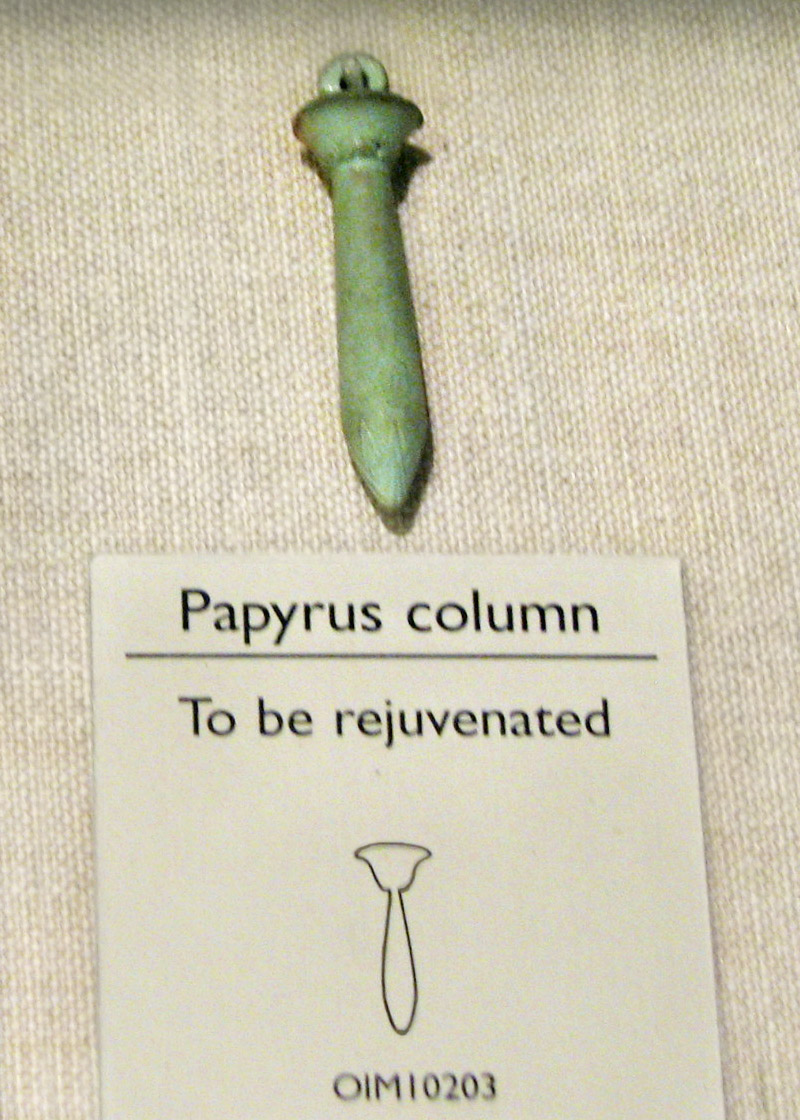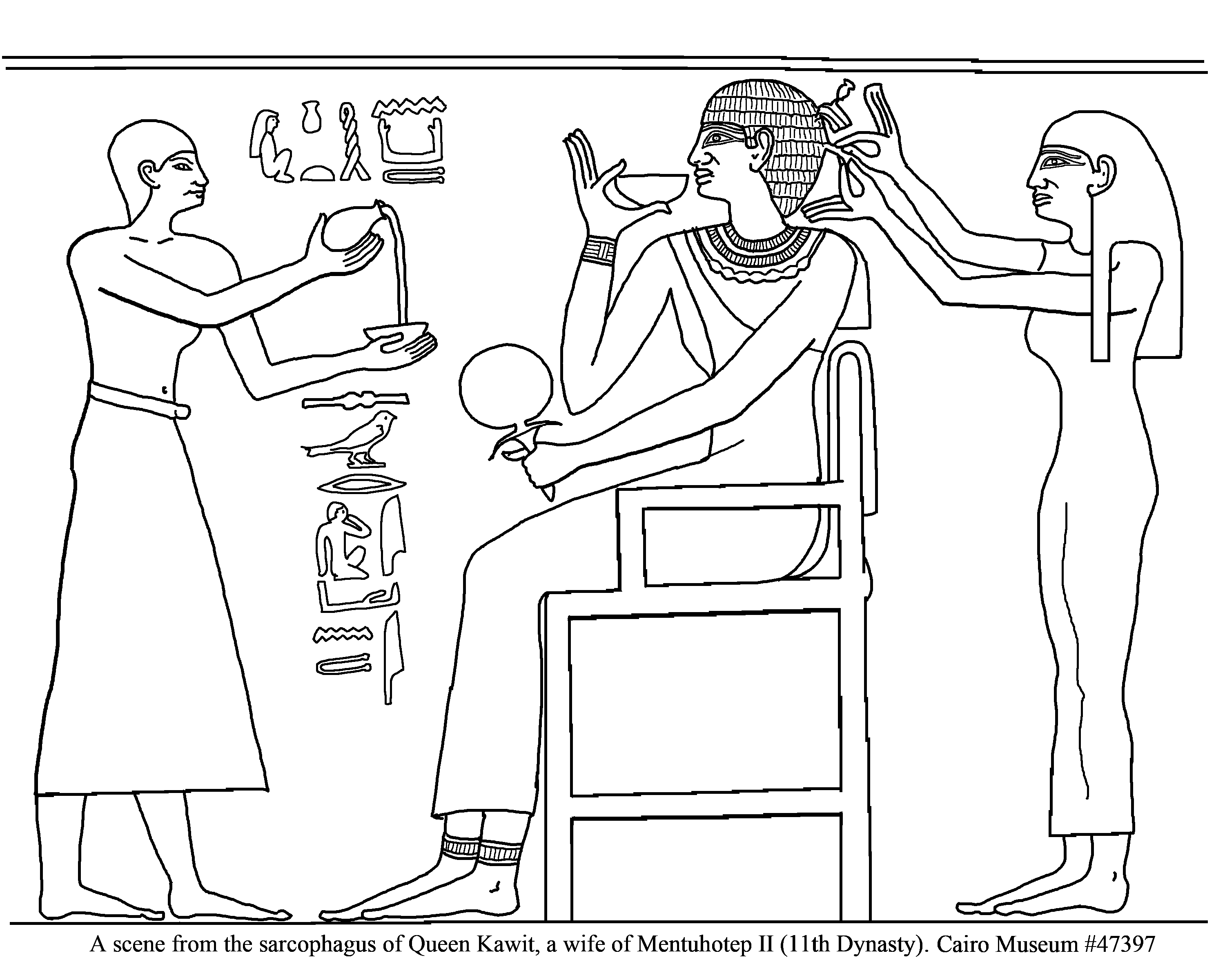New Kingdom, Dynasty 18, reign of Thutmose IV, ca. 1400–1390 B.C.E.
Upper Egypt; Thebes
Bronze or copper alloy, H. 29 cm (11 7/16 in); diam. 15.5 cm (6 1/8 in) weight 1.2 kg (2.7 lbs)
Bequest of Walter C. Baker, 1972 (1972.118.30)
|
New Kingdom, Dynasty 18, reign of Thutmose IV, ca. 1400–1390 B.C.E. Upper Egypt; Thebes Bronze or copper alloy, H. 29 cm (11 7/16 in); diam. 15.5 cm (6 1/8 in) weight 1.2 kg (2.7 lbs) Bequest of Walter C. Baker, 1972 (1972.118.30) |
|
There are many examples of these mirrors, each with a papyrus branch and a woman:
The lady in the Met's example, in addition to the papyrus umbel serving as a crown, is also holding a papyrus. Why do all these mirrors have this symbol?
 OIM 10203 Those using the mirrors hope for youthful rejuvenation, and may have hoped the use of this symbol would aid in achieving it.
|
